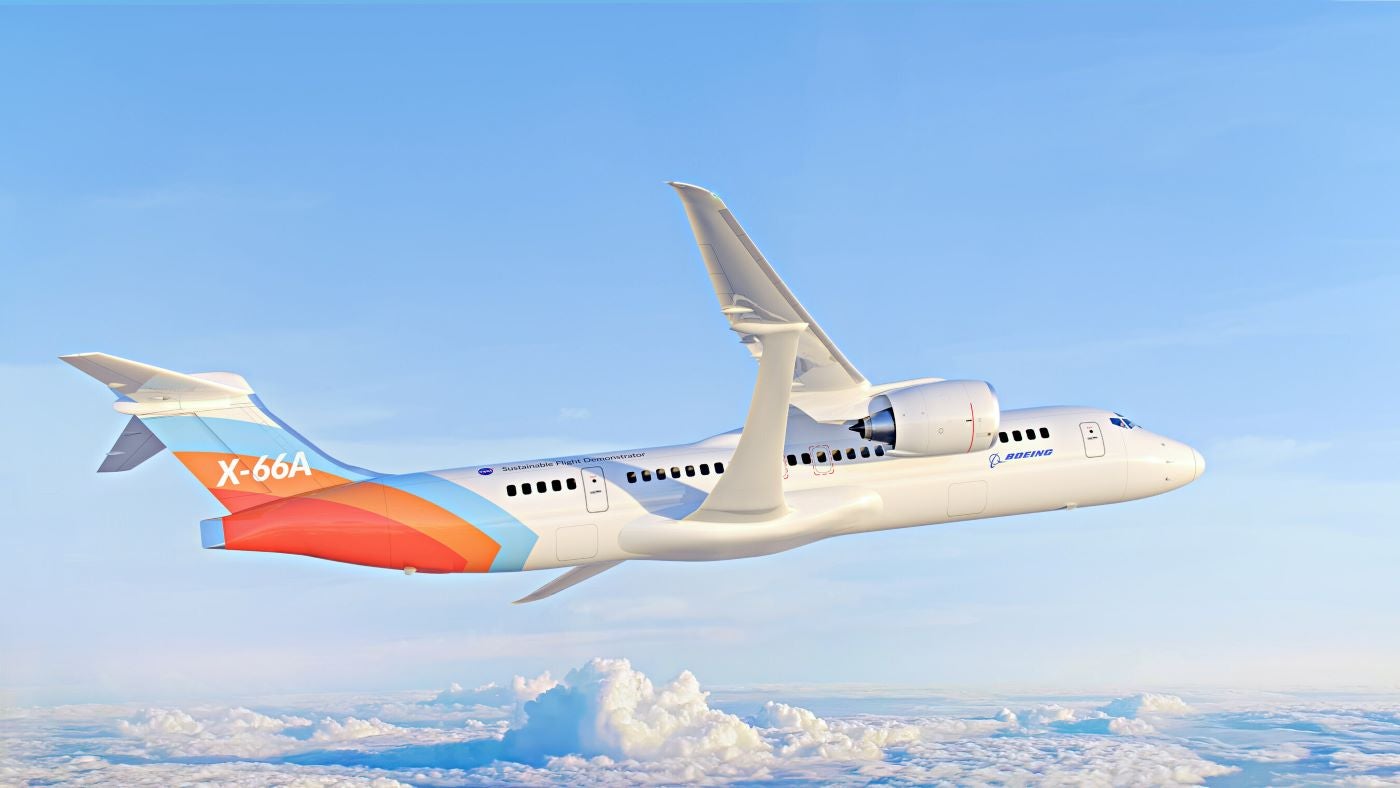
Boeing and NASA have announced their collaboration with a number of US airlines with the aim to advise the Sustainable Flight Demonstrator (SFD) project and aid the development of the X-66A research aircraft.
The SFD project’s goal is to collaborate with businesses, academia and other governmental agencies to identify and develop key airframe technologies that have a high likelihood of being applied to the next generation of single-aisle seat class aircraft.

Discover B2B Marketing That Performs
Combine business intelligence and editorial excellence to reach engaged professionals across 36 leading media platforms.
The US Air Force gave the X-66A title to the plane built under the agency’s SFD project, which NASA stated as the project’s focal point.
Furthermore, NASA and Boeing unveiled the new X-66A livery at the EAA AirVenture Oshkosh air show on 25 July.
Boeing chief technology officer Todd Citron highlights how feedback during the project enables the collaboration to move forward in sustainable aviation: “Hearing directly from the operators during all phases of the Sustainable Flight Demonstrator project will help us understand exact requirements and trade-offs.
“The airlines’ feedback will significantly contribute to the X-66A project learnings while furthering aviation sustainability.”

US Tariffs are shifting - will you react or anticipate?
Don’t let policy changes catch you off guard. Stay proactive with real-time data and expert analysis.
By GlobalDataThe aircraft is planned to fly in 2028, with the results of its flight tests set to help inform industry decisions as to the design of new production single-aisle aircraft for 2030.
The X-66A, which will be constructed at the Boeing plant in Palmdale, California, will test the Transonic Truss-Braced Wing (TTBW) airframe arrangement.
Boeing stated a single-aisle aircraft with a TTBW design could reduce fuel consumption and emissions by up to 30% compared to today’s domestic fleet.
Furthermore, US airlines will offer feedback throughout the project which includes sharing feedback on sustainable operations and airport compatibility.
As airline pilots will have a chance to experience the X-66A through a flight simulator they can assess the vehicle’s handling characteristics and whether modifications need to be made.
According to NASA, the X-66A is the first X-plane designed solely to assist the United States in achieving the target of net-zero aviation greenhouse gas emissions, as reported in the US Aviation Climate Action Plan published by the White House.



